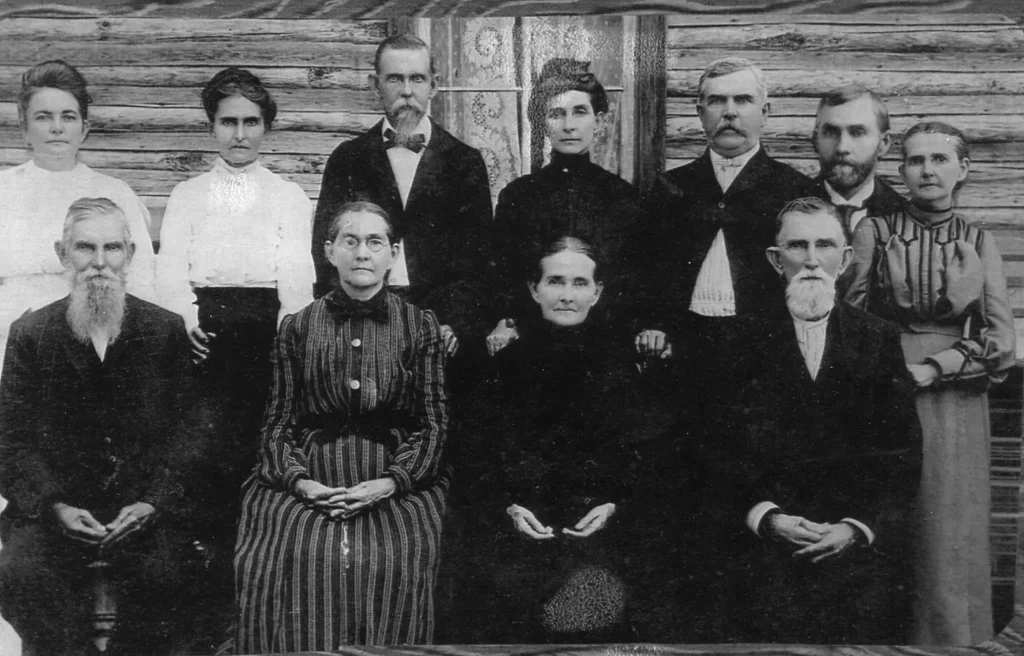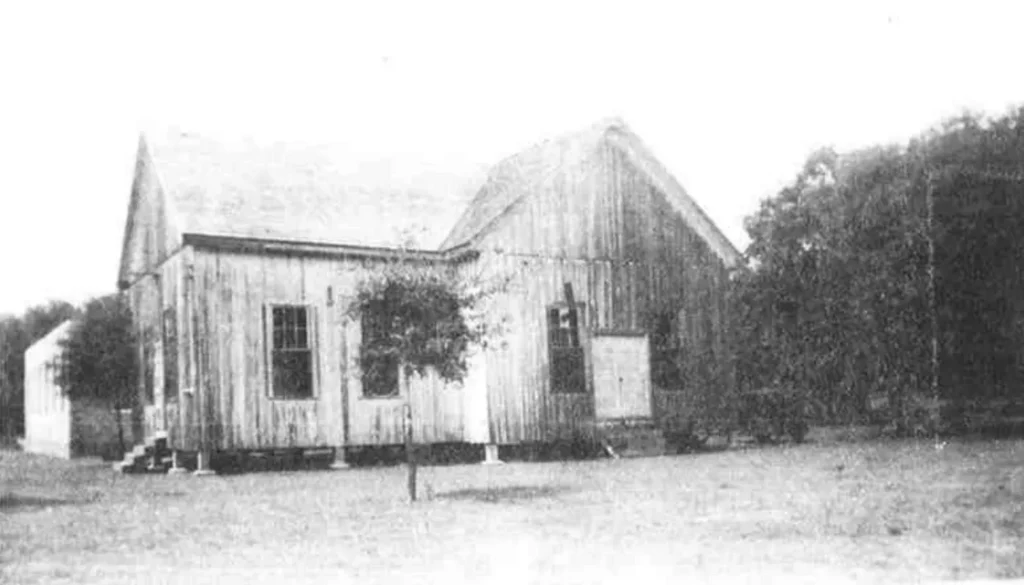Lastinger Family were first to settle pioneer Lake Placid
Joshua Berrien Lastinger decided that his idea of a garden paradise was the wild lake country of southern Highlands County.

One of the few surviving photos of Lake Placid’s first white settler, Joshua Berrien Lastinger, comes from a 1904 family reunion. The children of William Lastinger and their families — over a hundred grandchildren and great-grandchildren — gathered for a colossal feast on their father’s posthumous 100th birthday. Many had not seen each other for years, traveling back to South-Central Georgia, where it all began.
William, the family patriarch, acquired 2,225 acres of land northeast of Valdosta. With the purchase, the family became the largest landholder within several counties. The estate included a large lake with a grain mill. The clan, which first immigrated from Germany in 1740, added a sawmill, and the area became known as Lastinger’s Mills.

William and Louisa English Lastinger grew the family to twelve children. Their farm became a sprawling estate called Stony Hill, with a two-story mansion, corporate offices, an outbuilding, laborer quarters, and a cotton plantation. In addition to the land, their wealth included over 100 slaves to run affairs.
At the advent of the “War Between the States,” William sold his vast holdings at Stony Hill in 1862. With so much of the family riches being tied up in the success of the Lost Cause, he doubled down. The patriarch bought a new farm at Cat Creek, added additional slaves for increased cotton production, and held much of his assets in Confederate dollars. Hindsight is 20/20.
All of the Lastinger boys fought for the Confederacy; one brother (Seaborn) never returned from the battlefield. After the Civil War’s conclusion, some siblings stayed on the farm at Cat Creek, north of Valdosta. Many of the others, including Joshua, eventually scattered around the South.
Joshua married Louisa Bowden Lastinger in 1870 in Lowndes County, Georgia. The couple had their first child two years later, and by 1880 they were living in Hernando County, Florida.
After a few years, Joshua and Louisa (along with their five young girls) decided to head further into the southern frontier. They found a home in the tiny village of Owens, located on the west side of the Peace River to the southwest of Arcadia.

Back then, Arcadia barely existed. It was a tiny outpost called Tater Hill Bluff. Owens was the more upstart of the two settlements for a brief moment. In 1886 the Florida Southern Railway bypassed Owens and Pine Level, and Arcadia’s stock soared in short order. When DeSoto County was carved out of Manatee County in 1887, Arcadia replaced Pine Level as the county seat.
While on a hunting trip in 1890, Joshua Lastinger came across the lake-covered south end of the Lake Wales Ridge. He instantly fell in love with the area. When he returned to Owens, he told his wife he had just found the “garden spot of Florida” where they would make their home.
The Lastinger family loaded whatever belongings they could fit onto an ox-drawn wagon the following spring: destination Lake Stearns. The journey took three days to complete. Most likely, they first headed north toward what is now Zolfo Springs. Charlie Creek would have been a likely stopover, perhaps camping on the Whidden homestead at Sweetwater.
The following day the family of seven continued eastward past Crewsville before turning south on the Footman Trail. This cattle trail was a primary “highway” then, running north-to-south through western Highlands County and eventually down to the cattle market at Punta Rassa on the Gulf.
The second night they camped out at Henscratch. Only a couple of scattered pioneer families interrupted the virgin wilderness. Henscratch itself was then known as Guano Hammock. It was little more than a hunting camp and was known to host early church retreats. Along the trail near Henscratch, Joshua spotted an old sawmill that would later become useful.
The next day they finally arrived at their new home on the northeastern shore of Lake Stearns. Talk about roughing it!

They unloaded the belongings from the wagon, which included a wood-burning stove for cooking that they tied to a tree. They slept on the bare ground with only a thin cot mattress. Mosquito netting was strung from tree to tree over the bedding as the only protection from the elements.
Over the following days and weeks, Joshua and his five daughters — Sallie, Laura, Dannie, Loka, and Bessie — cut down enough trees to fashion benches, tables, and a crude shanty. Louisa began cultivating the first fruit trees along the shores of Lake Stearns, which was renamed Lake June-in-Winter during the 1920s to be more appealing to the yankees.
Remembering the sawmill, Joshua axed trees at Henscratch and carted the cut lumber to Lake June’s western shore—near Leisure Lakes. Then he tied several trees together to form a makeshift barge and floated the planks across the water to their homestead on the bay at the northeast corner of the lake, which for over a hundred years was referred to by locals as Lastinger Cove. From these boards, they constructed the first proper home in Lake Placid!
After filing the application in 1890, The federal government would officially grant the Lastinger’s land patent, consisting of 131 acres, in 1897.

New settlers came very slowly to the backwoods region. But as they did, it was Lastinger who became the first carpenter. The family was also one of the first to cultivate citrus, and some trees they planted reportedly survived into the 1980s!
They were founding members of the Lake Stearns Baptist Church, which Joshua constructed (along with a schoolhouse) north of the lake on Old Henscratch Road. Joshua was the first deacon of the church.
The Lastingers commissioned a sailboat to be constructed in Arcadia and proudly soared around Lake Stearns upon it. Whether to church on Sundays or to the schoolhouse (where daughter Laura was the first teacher), the boat shuttled as many as three families from the east side of the lake to the Lake Stearns/Henscratch community on the northwest side.
The 1910 Census reported just 11 people living in Lake Stearns (Lake Placid), though more were living further on the outskirts, closer to Kuhlman (Lake Josephine), Henscratch, Highlands Hammock, and to the south along the Footman Trail.
The seclusion started to change when the train came to town in 1916, and it passed right through the Lastinger property. Joshua donated the right of way to the Atlantic Coast Line Railroad, as it was extended from Sebring with a depot opened nearby. By the 1920 Census, it was reported that 307 people lived in the town; that number ballooned to 819 ten years later.

Joshua and Louisa Lastinger died in 1931, but their family had grown to nine children by then. The line multiplied to several dozen through their grandchildren. The Lastinger family, the first white settlers of Lake Placid, have indeed left a lasting (ba-dum ching) impact on the city to this day.

This post is 1774 days old. Comments disabled on archived posts.